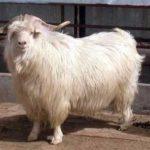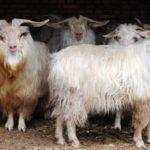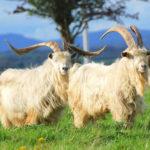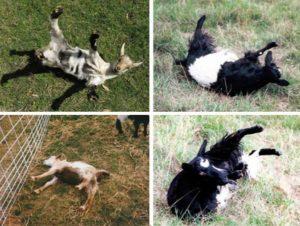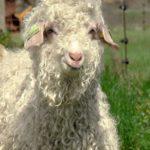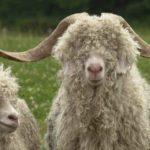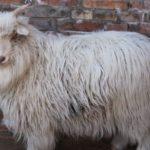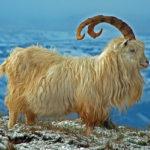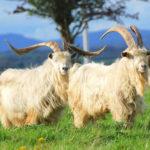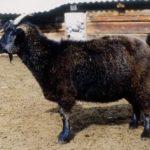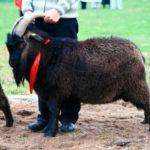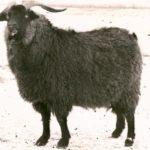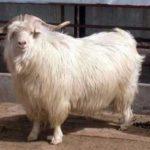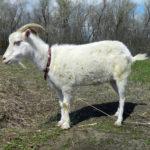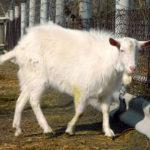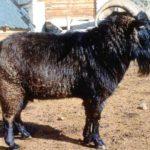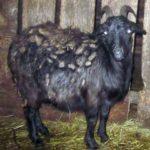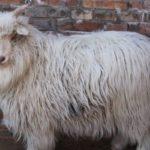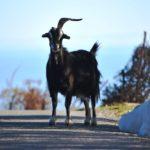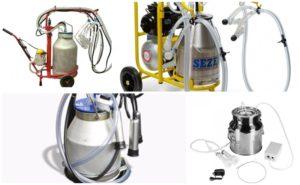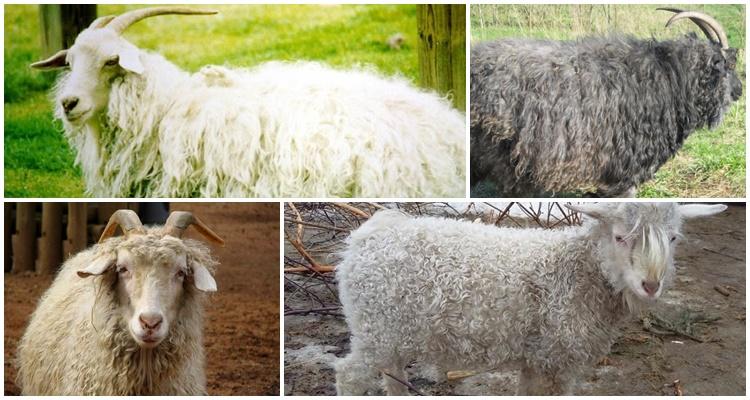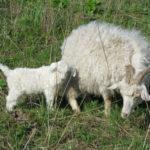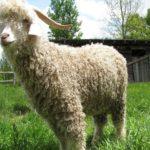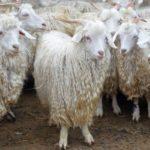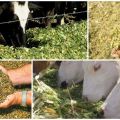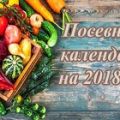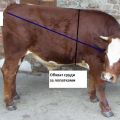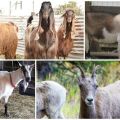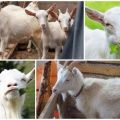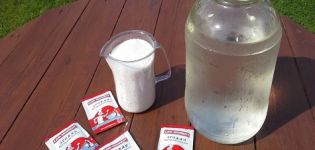Top 8 downy goat breeds, their characteristics and comparison
Downy goats are bred to obtain down. This is a light, almost weightless raw material from which warm clothes are made. Natural fluff does not cause an allergic reaction. Things made from it are very fluffy, distinguished by sophistication and beauty. Down is valued much higher than wool. It is even called soft gold. Downy yarn is rarely dyed. They usually retain the natural color of the down.
Content
General characteristics and features of downy goats
These are animals, from whose wool they comb out the most valuable raw material for the textile industry - down. Their milk productivity is low. Body weight is on average 46-76 kg. Males and females have a barrel-shaped body. Goats give birth to 1-3 kids per year. Females after lambing give 1-3 liters of milk per day. Representatives of downy breeds, as a rule, live in regions with a sharp seasonal change in climate (alpine, steppe regions of Eurasia).
The hair of animals consists of coarser guard hairs and thin, wrinkled down hairs (undercoat). All representatives of the down breed are conventionally divided into 2 groups (depending on the structure of the coat). The first includes Orenburg, Kashmir and Dagestan goats, their down is shorter than the awn. The second group includes the Don, Gorno-Altai, black Uzbek, Kyrgyz breeds, in which downy hairs are equal to the awn or even longer than it.
Animals molt twice a year. Their first molt occurs in late summer and early autumn: the awn changes almost imperceptibly, down begins to grow. The undercoat grows actively until January-February. In winter, representatives of this breed look like fluffy balls. Warm down keeps animals warm during the cold season.
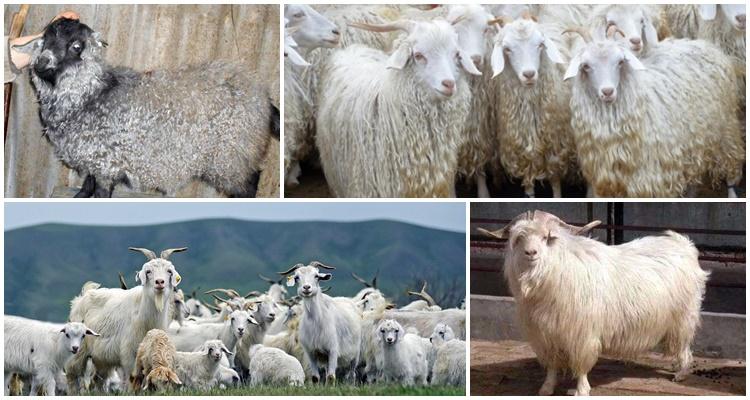
By the end of winter and early spring, with the onset of hot weather, the need for a warm wool cover is lost. In goats, the second molt begins: the fluff and most of the guard hair come off. It was during this period that the animals begin to be combed out mechanically, that is, with a special comb. This method of harvesting helps to obtain delicate and lightweight raw materials of high quality.
Goat down can be collected not only by combing, but also by shearing the wool. When shearing, a homogeneous and smooth woolen raw material is obtained, which is poorly felted and spinning. There is too little grease in the wool, so during the shearing process, it usually breaks up into individual braids.
The best breeds
There are a dozen breeds that have been bred for centuries to obtain fluff. Animals differ in the color of their wool and the quality of the raw materials. The amount of collected (combed) down also depends on the gender (in the case of goats) and on age.The peak of downy productivity falls at 4-5 years of age.
Orenburg
These are horned goats native to the Orenburg region. The breed was bred in the process of folk (natural) selection. Orenburg goats gained popularity thanks to the world-famous delicate downy shawls made by local craftswomen.
Angora
This breed is originally from the steppe regions of Turkey, although goats from Ankara, or rather, Angora, are well known in Europe, the USA and even in Australia. Animals are sheared 2 times a year. Shear from 3 to 6 kg of wool from one individual.
Kashmir
The breed is originally from highland Tibet, bred in Iran, India, Mongolia. Animals have white or gray, thick and long hair. The head of goats has a bulging nasal septum.
Mountain Altai goats
Large animals weighing 45-65 kg. In this breed, the entire body is covered with thick hair. Males and females are bred in Gorny Altai. They were bred in the 40s of the 20th century. Mountain Altai males and females have black, less often gray and white hair.
Dagestan downy goats
These are animals weighing 35-55 kg with white long hair and horns on their heads. In the Dagestan breed, the awn is 2 cm longer than the down.
Volgograd
The Pridonskaya, or Volgograd, breed has long been familiar to the residents of the Volgograd, Voronezh, Rostov regions. Animals are stocky, with a strong constitution, males and females have horns.
Black downy goat
These are animals with long black hair and a body weight of 40-50 kg. Downy breed of dark color was obtained by accident, in the last century, during the breeding of the Soviet wool goat. Moreover, the selection involved white Angora females.
Kyrgyz
These are goats obtained by crossing with the Don goats-producers. Coat color - light or dark. The mass of animals is 40-58 kg.
Comparison of fluffy goats
Table of the main characteristics of downy goat breeds:
| Breed | Down length | The tonicity of the fluff | Fluff fineness group | Down color | The amount of combed down per year (in grams) males / females | The percentage of down in the wool mass |
| Orenburg | 5.5-6 cm | 16 μm | thin | Dark gray, gray, white | 500/300 | 35-46 % |
| Pridonskaya (Volgograd) | up to 11 cm | 20 μm | middle | Gray, white | 1500/750 | 64-75 % |
| Gorno-Altai | 7-8 cm | 18 μm | thin | The black, Gray | 850/470 | 60 % |
| Dagestan | 3.5 cm | 13 μm | thin | white | 850/400 | 23 % |
| Uzbek, Kyrgyz, black down | 6-10 cm | 16-20 microns | Thin, middle | black gray | 550/350 | 54 % |
| Angora | 15 cm | 19 μm | middle | White gray | 500/200 | 30 % |
| Kashmir | 3-9 cm | 16 μm | thin | White gray | 150/120 | 20 % |
Care and maintenance
In summer, representatives of downy breeds must be grazed in the meadow. Animals should eat green grass and be exposed to sunlight. Throughout the warm season, goats replenish their body with useful substances by eating medicinal plants in the pasture. The main food in summer is grass of legumes and cereals.
For the maintenance of goats and goats, it is necessary to build a special room (barn, barn). One animal should have 2 square meters. meters of area. Males and females are grazed in the pasture all day, and at night they are driven into the barn. It is necessary to keep the barn clean and change the dirty litter daily.
In winter, animals are not taken to the meadow. During the entire cold period, goats and goats should be in the barn. The air temperature in the room is maintained at 15-20 degrees Celsius. Pets are fed three times a day.
In winter, hay is the basis of their diet. As a top dressing they give finely chopped vegetables, some grain mixtures, spruce branches, pharmacy vitamins and minerals, salt, premixes, meal, sunflower cake. Animals are given water to drink twice a day. To prevent diseases, goats are vaccinated at 3 months of age.
Advantages and disadvantages
Where is it bred?
Downy goats have long been breeding in Russia, especially in the Orenburg, Volgograd, Voronezh and Rostov regions, as well as in Turkey, Mongolia, Iran, Pakistan and India. These are animals of a temperate continental climate, which are densely overgrown with a warm undercoat before winter. With the arrival of spring, their fluff disappears. At the beginning of the molt, people comb out the undercoat and make warm clothes from it.
